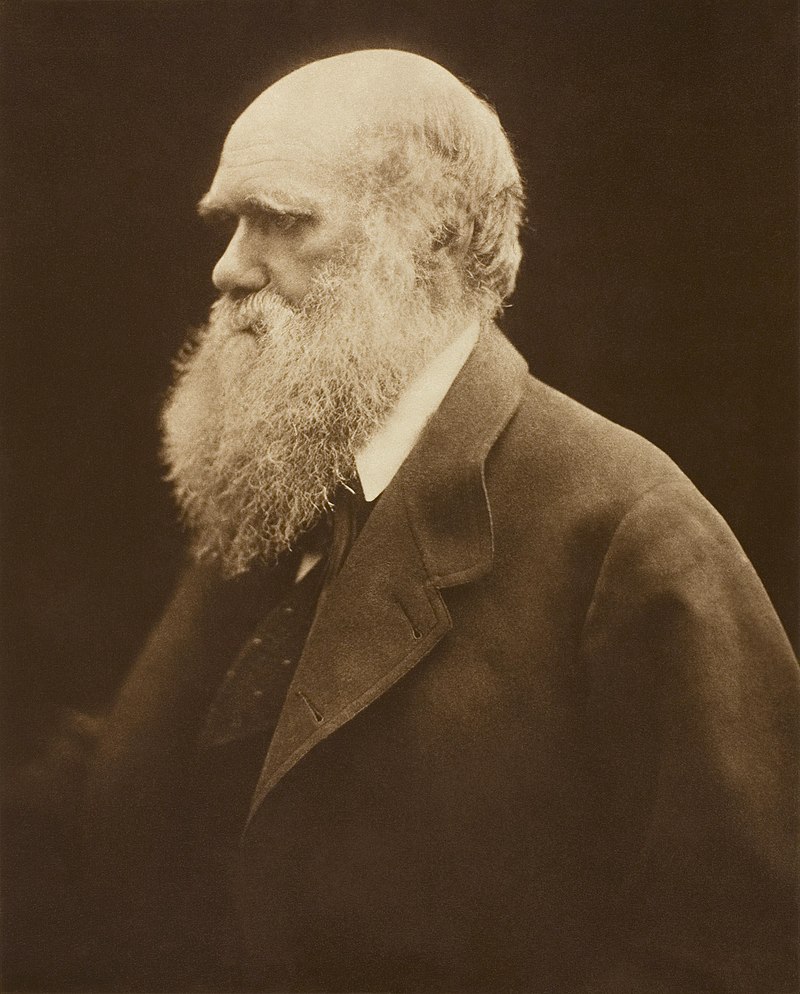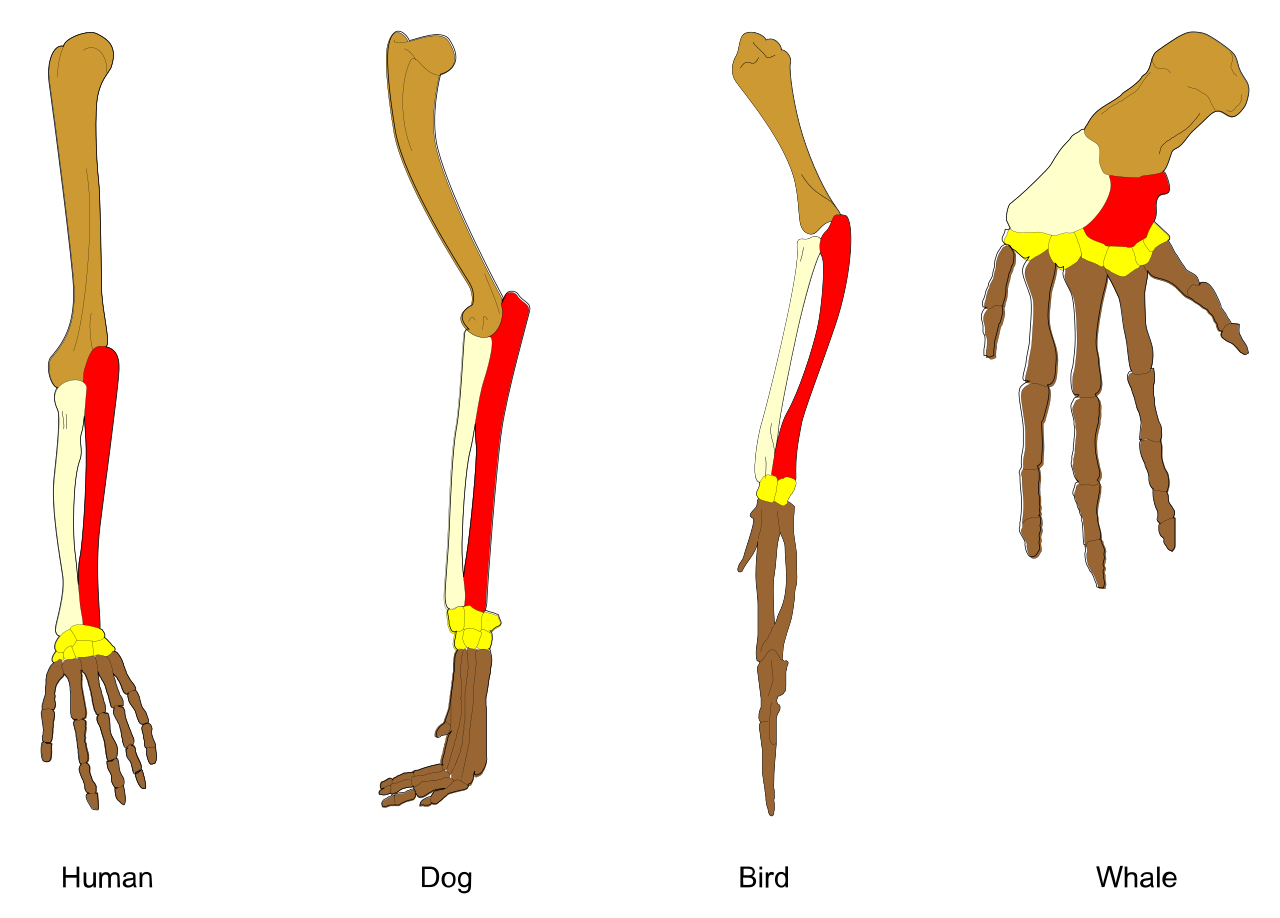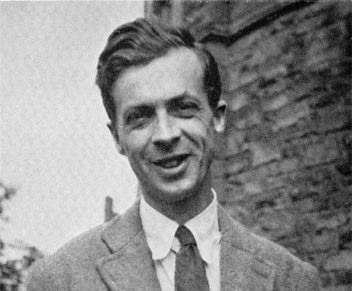Evolution by natural election is the ‘greatest idea ever’ — a view which has been well set out by Julian Huxley (1961, 1964) and which I share. It is, In my view, the greatest idea as it provides a key concept to make sense of us and our world. In its essence it is simple, but breathtaking in its subtlety.
It is accepted by biologists and by those in many other disciplines. In other words, evolution is a key ‘organising principle’ for many branches of knowledge. More than that, — as Huxley argued — an evolutionary world-view offers a coherent view of our world and our future and therefore is of fundamental importance to humankind.
In this article I attempt to do two things: first, to set out the main features of the process of evolution by natural selection and why it is so widely accepted; second, to summarise its implications for our view of ourselves, our societies and our future.
Of course, many excellent writers have described the workings and wonder of evolution, most notably Richard Dawkins (2009) in The Greatest Show on Earth.

Charles Darwin in 1868.
Not Just His Theory
Before I discuss the Theory of Evolution by Natural Selection, as described by Charles Darwin in The Origin of Species by Natural Selection (1859) and modified in the light of later knowledge, let me dispose of one false idea which is used to try to undermine the concept of evolution.
‘Theory’ does not mean that it is not accepted; it is not ‘only his theory’, as I once heard it described. In science, a tentative idea is referred to as an hypothesis or conjecture.
‘Theory’ means that the idea has survived repeated testing and it is now the consensus. ‘Theory’ replaces the older idea of natural ‘laws’, fixed and immutable. (In science all theories are formally tentative and liable to change in the light of new evidence.) The strength of any theory depends on three things: the rigour of the testing it survives, the number of phenomena it accounts for and the accuracy of the predictions that arise from it.

Sea shells, Rosses Point, County Sligo, Ireland.
Variation in Living Things
Variation in living things is the basis of all evolution, so I want to briefly explain the sources of variation. There are two main sources: genetic variation and ‘environmental variation. Genes provide the basic instructions for the assembly and function of living things. An individual’s genetic endowment comes from their parents. Sexual reproduction involves the shuffling of the parents’ genes so that each individual gets a virtually unique combination of genes. Genes are subject to chemical changes or mutations, which may alter their function. (On average we each have about 150 genetic mutations compared to our parents.)
The degree of genetic control varies greatly. In some conditions it approaches 100% (sickle-cell trait, blood groups), but in many other conditions hundreds or even thousands of genes are involved in a particular trait (intelligence, height). In the latter case each gene has only a minute effect on the trait. Genetic instructions are also fairly general. For example, in brain development genes ‘direct’ a particular bundle of nerve fibres to connect to a particular group of nerve cells; but which individual fibre goes to which individual cell is not specified. The precise connections during development at that local level are a matter of chance (Mitchell, 2018).
But the ’environment’ is also a major source of variation and plays a huge part in the ultimate results of the genes. By ‘environment’ I mean the environment inside cells where genes are ‘translated’, the environment within the developing body, and also the environment in which the living creature exists. For humans this includes all life experience from family, education, illness, social interactions and everything else.
 What is Evolution?
What is Evolution?
Evolution means the adaptive changes in living things which fit them to their environment. This is quite distinct from the development of the embryo or its voguish use for any change over time. Charles Darwin spent decades gathering evidence to support his idea of evolution by natural selection. Just like any other idea it has undergone changes to fit in with new knowledge, but Darwin’s description remains at the core of evolutionary thinking.
Essentially, Darwin proposed five key ideas, summarised by Ernst Mayer (1991) in One Long Argument. I’ll summarise each in turn.
Evolution/Change: Darwin had to overcome the contemporary view that the world was recently created and species were unchanging. In the 19th century it was becoming clear that the Earth is more than a few thousand years old. We can have great confidence in this idea because it is established using several completely independent measures, which all show that the Earth is about 4.5 billion years old (Dawkins, 2019).
This great age of the Earth is crucial to evolution because vast periods of time are necessary for genetic changes (mutations) to occur and for their consequences to be tested in the real world by ‘Natural Selection’. This vast expanse of time also evens out the effects of random events so that major trends can predominate. Just think of the thousands of seeds produced by a single plant: perhaps only one will end up in a spot that is suitable to allow it to reach maturity and produce offspring. Over an extended time period the best adapted to the local conditions will come to predominate. That’s how randomness works: a huge numbers of opportunities arising over long periods of time.
During the 19th century the discovery and examination of fossils showed that some species had become extinct while others had evolved and left modern descendants. These studies also showed that different vertebrate species shared a common body plan, albeit significantly modified in some cases. For example, compare the human forelimb with that of a horse or bat. The plan is the same, but each is massively modified to adapt the animal to its way of life (Huxley, 1863). Darwin also used evidence from the ‘artificial selection’ by animal and plant breeders of his own time, which showed that living species could change significantly at a much greater rate than could occur by chance in nature.
Common Descent: Darwin called this ‘descent with modification’, so that offspring resemble their parents but are not identical. (Darwin had no knowledge of the mechanism of inheritance and mutation.) The genetic differences arising from mutation and genetic shuffling during sexual reproduction are the basis of evolution. Differing circumstances will favour certain genetic variants over others, leading to differential distribution of genes throughout the population.
Descent with modification implies that all organisms come from a single common ancestor. The more closely related two species are, the more recent is their common ancestor.
Natural Selection: Darwin inferred this from descent with modification and the fact that there are generally far more offspring than are needed for mere replacement of the population, leading to competition for resources and mates, so that over vast time spans the offspring best ‘fitted’ to their circumstance tend to survive and reproduce. In this way favourable mutations persist and become distributed through a population. This comes about by natural selection acting on variations that occur by chance.
Natural selection is the most important element of evolutionary theory and perhaps the hardest to grasp, so I’ll present the example of the evolution of human skin colour in some detail. The earliest humans in Africa had dark skin which gave protection against strong sunlight. (Apart from sunburn, strong sun can also cause mutations which might lead to skin cancer.) In that environment dark skin clearly has an adaptive advantage. However, as human populations migrated northwards — over tens of thousands of years — darker skin became disadvantageous because it is less able to synthesise vitamin D, which requires sunlight. (Vitamin D is required for heathy bone growth.) Darker skin was no longer adaptive but had a selective disadvantage while paler skin was advantageous. In genetic terms, genes which altered the skin to a lighter hue were favoured and became more widespread in the population as a whole. In other words, those with paler skin were better adapted to thrive and pass on their genes to the next generation.
Species Multiply: A species is usually defined as a group of organisms that commonly interbreed and rarely, or never, interbreed with other members of related species. The simplest mechanism for forming new species is geographical isolation — by oceans or mountains for example — so that interbreeding is no longer possible and the separate populations diverge by adapting to different foods or acquiring different mating behaviours — adaptations which are inherited. Eventually the populations become so different that they can no longer interbreed, even if reunited.
‘Darwin’s Finches’ in the Galápagos islands are a classic example. When the Galápagos islands were formed by volcanoes they were colonised by a single species of finch from the South American mainland. They diverged over thousands of years acquiring mutations affecting, for example, beak shapes which adapted them to consume new foods. Eventually the differences were so great that they became different species incapable of interbreeding.
Gradualism: There are no sudden leaps in evolution; new types do not suddenly arise, but are formed by the gradual accumulation of beneficial mutations and adaptations.
‘Nothing in Biology Makes Sense Except in the Light of Evolution’. Theodosius Dobzhansky (1973) American Biology Teacher, 35 (3): 125–129.]
This summary of the main processes of evolution by natural selection shows that the workings of random processes with no purpose result in increasing levels of adaptation of living things to their environment. This is based on the fact that individuals vary and much of the variation is inherited. In competition for resources any slight advantage will be retained and spread through successive generations. In this way small changes can pile up to lead to large changes and eventually to new forms and new ways of life.

Julian Huxley in 1922.
The Modern Synthesis
In Darwin’s time there was no understanding of the mechanism of heredity which makes it all the more remarkable that he was able to take his ideas so far. Gregor Mendel first published his work in 1886 in an obscure journal and showed that heredity was in discrete units which were passed down the generations and combined in consistent ways (you can find a summary here). His revolutionary work was not rediscovered until the early years of the 20th century when the mechanisms of mutation and the spread of variant genes through populations were clarified. This work was brought together into a coherent whole by Julian Huxley (1942) in Evolution: The Modern Synthesis, generating what is sometimes called ‘Neo-Darwinism’. At that time this book was described as ‘the outstanding evolutionary treatise of the decade, perhaps the century.’

Daniel Dennett in 2008.
Implications of Evolution by Natural Selection: Here we explore some of the main implications of what Daniel Dennett (1995) called ‘Darwin’s dangerous idea’ for our understanding of ourselves and our world. We’ll consider the wide application pf evolutionary thinking in a variety of fields of human endeavour, then outline its impact on religion. After that we’ll look at ‘man’s place in nature’ and the special features of humans which result in our responsibility for the future evolution of ourselves and other living things on Planet Earth.
Applications of Evolution to Different Fields of Learning. One of the tests of an idea is how widely it serves as an ‘organising principle’, helping to examine and explain a wide range of phenomena. The evolutionary principles of variation and differential survival are considered essential in many disciplines outside biology from astronomy and cosmology to philology. (Indeed, philologists, who study the origins of words and languages, were ‘early adopters’ in the 19th century and nowadays some even use genetic models to build family trees of languages.)
In the sense that all fields of learning — indeed all human activities — are products of living things, namely humans, it is not surprising that the concept of evolution has proved so useful. It is all Biology after all (see Cultural Evolution below).
Religions: The earliest supporters of evolution recognised that there would be conflict with religion for two main reasons. First, because of the demonstration of the extinction and change of species, contrary to the belief in a single creation of fixed species. Second, evolution by natural selection is sufficient to explain both the ever more refined adaptation of organisms to their environment and also the intricacy of structure (Dennett’s ‘engine for complexity’). Hence it removes both the need for a creator god and the argument from design which asserts that intricate structures must have had a designer.’ Hence it removes both the need for a creator god and an argument for intelligent design which asserts that intricate structures must have had a designer. Some religious groups will accept most evolutionary ideas but insist that humans are special in that they have separately and divinely created souls. We will see that humans are special, but we can account for this in purely evolutionary terms.
‘Man’s Place in Nature’; (The title of an 1863 book by TH Huxley, that fierce 19th-century supporter of evolution.) The principle of descent with modification leads to the idea that all living things (including humans) are related. We are not separate from nature; we are part of nature, another type of animal, descended from other animals. (The Last Universal Common Ancestor (LUCA) of all living things was about 3.9 billion years ago; the last common ancestor of the human species was about 250,000 years ago.) In evolutionary terms that makes us all practically cousins and we should strive to co-operate. As Bertrand Russell and Albert Einstein (1995) wrote: ‘…remember your humanity and forget the rest…’

Dublin, Ireland.
Uniqueness of Humans — Cultural Evolution
Although we are undeniably part of the living world, an animal among other animals, we are however, special — indeed unique — in that we have the most complex brains, advanced language and writing. These qualities move us out of the two slow earlier phases of evolution recognised by JS Huxley sixty years ago. The first, Inorganic phase took billions of years for the formation of stars and the larger atoms, such as iron, carbon etc. The second, Organic phase took hundreds of millions of years during which the more complex molecules were formed until eventually some could reproduce themselves. Essentially this is the forming of the first living things which increased slowly in their complexity (under the influence of natural selection) until humans appeared.
In a few thousand years humans have evolved within Huxley’s Psychosocial phase of evolution in which change is extremely rapid: humans can rapidly transmit ideas of all kinds: technology, social structures — in short, all the cultural products of human societies. (I prefer the term cultural evolution for this process and I suspect that Huxley only called it ’psychosocial’ because he was addressing psychologists at the time.)
Cultural evolution means that humans can understand their place in the world, determine desirable goals and set a course towards those goals. For Huxley the next great evolutionary advance will be humanity’s agreement about its ‘destiny’, based on rational scientific thought and evolutionary principles. Our understanding of cultural evolution has profound consequences for our view of ourselves because we can see that we are responsible for ourselves and our actions including their effects on other living things and on our environment. This in turn has implications for our view on the value of the individual and hence for the way we organise our societies. We will explore these aspects in the rest of this article.
‘Every one of us is precious in the cosmic perspective. If a human disagrees with you, let him live. In a hundred billion galaxies, you will not find another.’ Carl Sagan, astronomer and writer (1981). Cosmos McDonald & Co, GB
The Value of the Individual
This is the great existential question for humans. An individual’s life of a few decades is as nothing on a cosmic time-scale of billions of years. In the face of this fact it is easy to feel daunted and despairing. Throughout human history many religions have addressed this question by promises of a blissful after-life or the suggestion that we are serving some supernatural being’s purpose — which is often depicted as unknowable and beyond question. Such views are unsupported by any useful evidence; they are matters of faith.
However, the evolutionary view described above — what we may call evolutionary humanism — gives a much more optimistic perspective. On this view every individual has value precisely because we are the ‘agents of evolution’. Each individual human has the potential to contribute to the betterment of our species, all living things and our environment. The evolutionary view is supported by all the weight of modern biology, the fact of evolution and our knowledge about ourselves.
In evolutionary humanism every individual is valued for two main reasons. First, in any evolutionary view diversity is prized in and of itself. As we have seen, diversity, or variation, is the stuff of evolution; without it evolution ceases. A population with a narrow range of possibilities and no variation is likely to become stranded by changes in the environment, unable to adapt — an evolutionary dead-end.
Second, we cannot know what problems lie ahead of us and what skills and aptitudes will be required to survive. Happily, humans are wonderfully diverse. Every individual should be encouraged to seek personal fulfilment to the highest possible degree. This is not a recipe for hedonistic self-indulgence, but rather a strategy for fostering the widest range of skills and aptitudes as a kind of evolutionary insurance policy.

Oslo, Norway.
Implications for Societies
Recall that variations in the effects of an individual’s virtually unique genetic endowment can occur during development and as a result of the ‘environment’ inside cells and the life-experience of an individual. Developmental effects are beyond our control, as is the genetic predisposition (at any given the moment). But the environment can be manipulated to produce optimum development of individuals. By environment I mean all experiences throughout life. This includes nutrition, exposure to infection and many other factors. For humans, perhaps the most important environmental factor is education (in its broadest sense). This is where we gain much of our knowledge of the wider world and learn how to think. It is in education that there is the most potential for enhancing our super-powers of abstract thought, communication and planning our goals and working out how to get there.
Given this knowledge of our development and an evolutionary overview which values each individual, we can get some clear pointers about how we should organise our societies for the best results on an evolutionary scale. In a society organised on the principles of evolutionary humanism, all individuals will have support and opportunities according to their needs so that they can maximise their potential. This means reducing poverty, providing efficient healthcare and the opportunities for education according to ability and attitude. As J. S. Huxley pointed out, our environment should include beauty and wonder. (George Orwell’s novel, 1984, shows how to do precisely the opposite.)
Societies are extremely complex but evolutionary humanism provides a set of general guidelines to help work out the details at a local level. For our present purposes, it is sufficient to say that this is extremely important work and it will draw on many strands of human thought.
Afterword: In attempting this summary of evolution and its implications, I am aware that almost every paragraph could be a topic for further detailed discussion of this fascinating and complex subject. Let the last words be those attributed by Francis Crick to Leslie Orgel: ‘Evolution is cleverer than you are.’
Acknowledgements
I am grateful to David McConnell and Tom Miniter for commenting on early drafts.
References
Bashford, A (2022). An Intimate History of Evolution: The Story of the Huxley Family. (An excellent account of JS and TH Huxley and their intellectual and personal milieux.)
Dawkins, R (2009). The Greatest Show on Earth: The Evidence for Evolution.
Dennett, DC (1995). Darwin’s Dangerous Idea: Evolution and the Meanings of Life.
Huxley, JS (1961). The Humanist Frame (See the essay of the same title.
(1964). Essays of Humanist
(Much of JS Huxley’s work is now out of print although some of it can be read online, and scanned copies are available.)
Huxley, TH (1863). Man’s Place in Nature and Other Essays. (Often reprinted but now out of print; available in scanned versions.)
Mayr, E (1991). One Long Argument: Charles Darwin and the Genesis of Modern Evolutionary Thought.
Mitchell. K (2018) — Innate: How the Wiring of Our Brains Makes Us What We Are.
Russell, B & Einstein, A (1995). The Russell-Einstein Manifesto. https://pugwash.org/1955/07/09/statement-manifesto/ [accessed 8/5/23]
Feature Image: Fossil, Rosses Point, County Sligo, Ireland.




